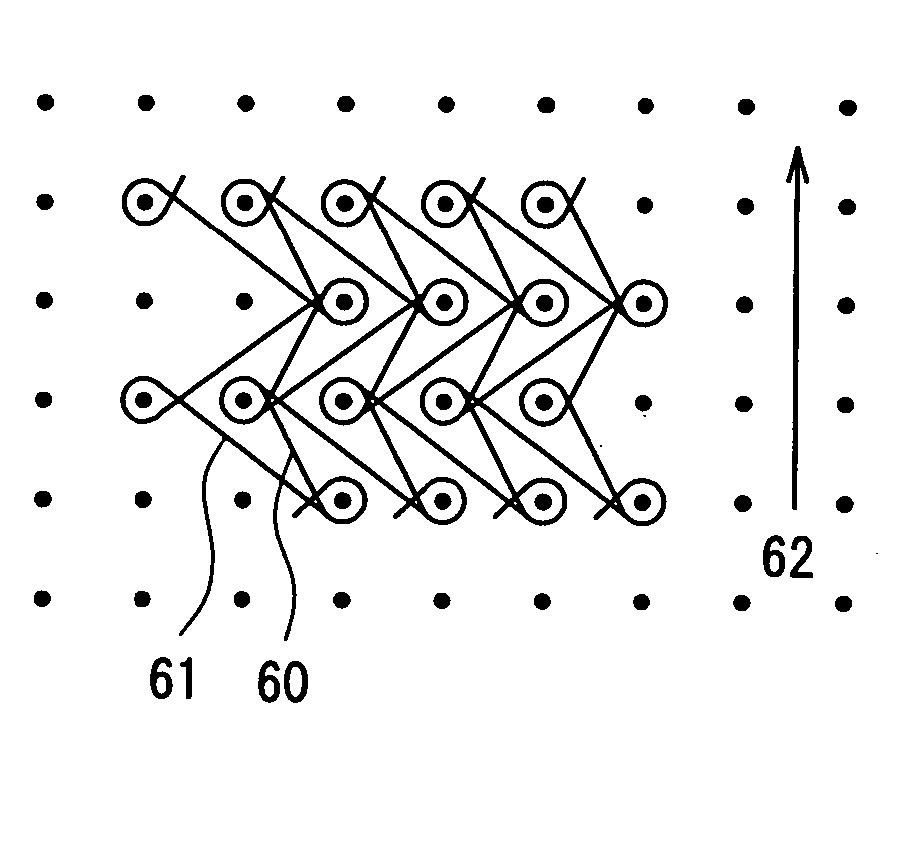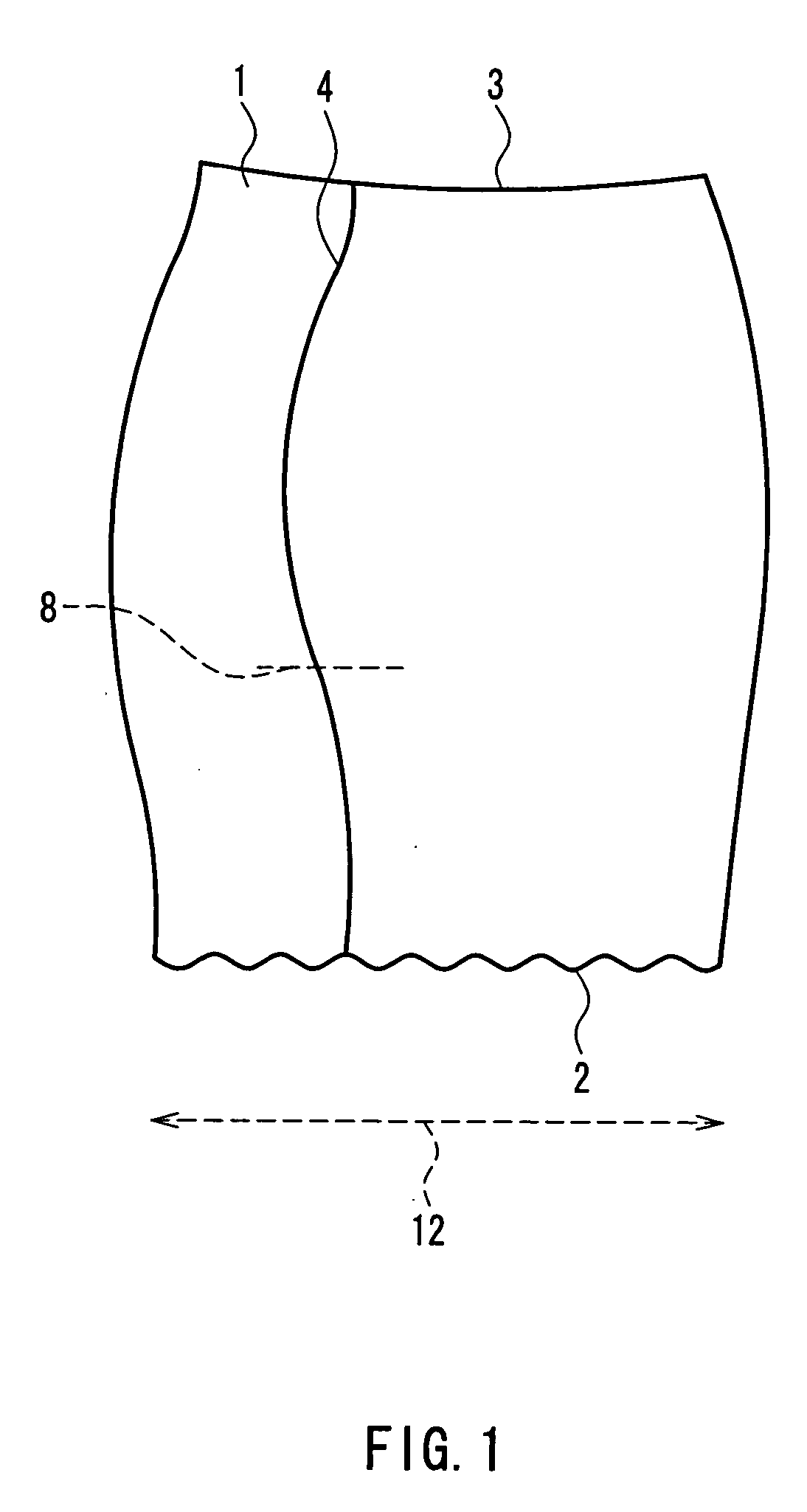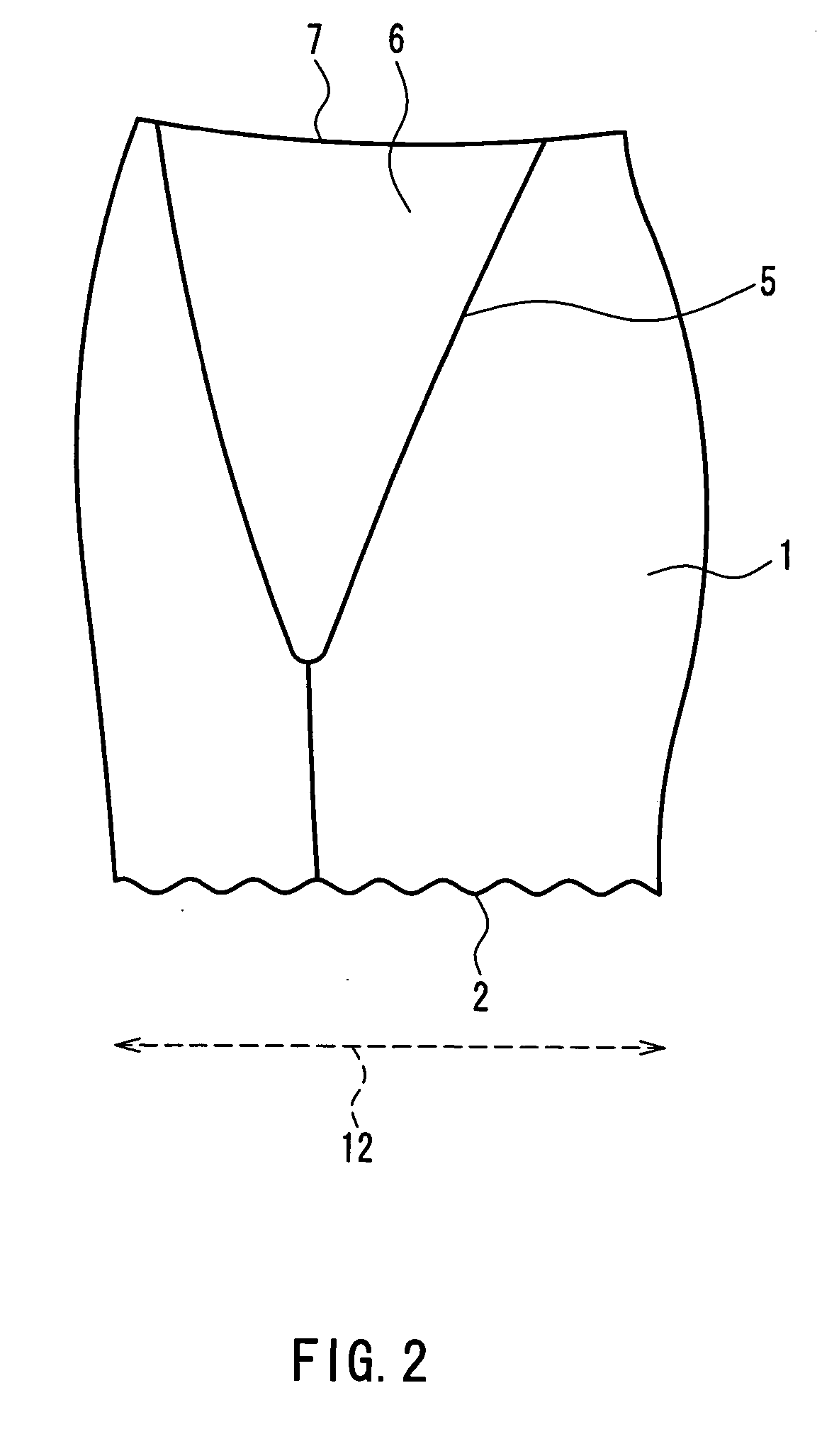Clothes
a technology for clothes and garments, applied in the field of clothes, can solve the problems of affecting the comfort of wearing, affecting the wear comfort, and affecting the sewing of garments,
- Summary
- Abstract
- Description
- Claims
- Application Information
AI Technical Summary
Benefits of technology
Problems solved by technology
Method used
Image
Examples
example 1
[0169]FIG. 1 is a perspective view showing a semi-long girdle according to an embodiment of the present invention of a garment that has an edge that does not require hem finishing when left as cut and that has a body-shaping function, seen from the rear side. FIG. 2 is a perspective view of the semi-long girdle of FIG. 1, seen from the front side. FIG. 3 is a plane view showing, on a knitted fabric, a cutting line of a side front—side—hip portion—leg portion covering piece 1, corresponding to the left side of the wearer of the semi-long girdle shown in FIG. 2, as well as a plane view of a crotch portion.
[0170] In FIGS. 1 to 3, reference numeral 1 denotes the side front—side—hip portion—leg portion covering piece covering the side front—side—hip portion—leg portion, which is continuous in vertical direction of the girdle and made of one piece without a level difference in its surface. Reference numeral 6 denotes an abdomen portion covering piece covering the abdomen, which is contin...
example 2
[0180]FIG. 4 is a perspective view showing a short girdle according to an embodiment of the present invention of a garment that has an edge that does not require hem finishing when left as cut and that has a body-shaping function, seen from the rear side. FIG. 5 is a perspective view showing the short girdle of FIG. 4, seen from the front side. FIG. 6 is a plane view showing, on a knitted fabric, a cutting line of a side front—side—hip portion covering piece 15, corresponding to the left side of the wearer of the short girdle shown in FIG. 5.
[0181] In FIGS. 4 to 6, reference numeral 15 denotes the side front—side—hip portion covering piece covering a side front—side—back portion, which is continuous in the vertical direction and made of one piece without a level difference. Reference numeral 16 denotes an abdomen covering piece covering the abdomen, which is continuous in the vertical direction and made of one piece without a level difference. Reference numeral 17 denotes a front c...
example 3
[0190]FIG. 17 is a rear view of a short panty according to an embodiment of the present invention of a garment having an edge that does not require hem finishing when left as cut. FIG. 18 is a front view of the short panty shown in FIG. 17. FIG. 19 is a plane view showing, on a knitted fabric, a cutting line of a front flank—side—hip portion covering piece 75, corresponding to the left side of the wearer of the short panty shown in FIGS. 17 and 18.
[0191] In FIGS. 18 and 19, reference numeral 75 denotes the front flank—side—hip portion covering piece covering the front flank—side—back portion, which is continuous in the vertical direction and made of one piece without a level difference. Reference numeral 76 denotes an abdomen—crotch covering piece which covering the abdomen and crotch portion, which is continuous in the vertical direction and made of one piece without a level difference. The front flank—side—hip portion covering pieces 75 on the left and right are sewn together by ...
PUM
 Login to View More
Login to View More Abstract
Description
Claims
Application Information
 Login to View More
Login to View More - R&D
- Intellectual Property
- Life Sciences
- Materials
- Tech Scout
- Unparalleled Data Quality
- Higher Quality Content
- 60% Fewer Hallucinations
Browse by: Latest US Patents, China's latest patents, Technical Efficacy Thesaurus, Application Domain, Technology Topic, Popular Technical Reports.
© 2025 PatSnap. All rights reserved.Legal|Privacy policy|Modern Slavery Act Transparency Statement|Sitemap|About US| Contact US: help@patsnap.com



